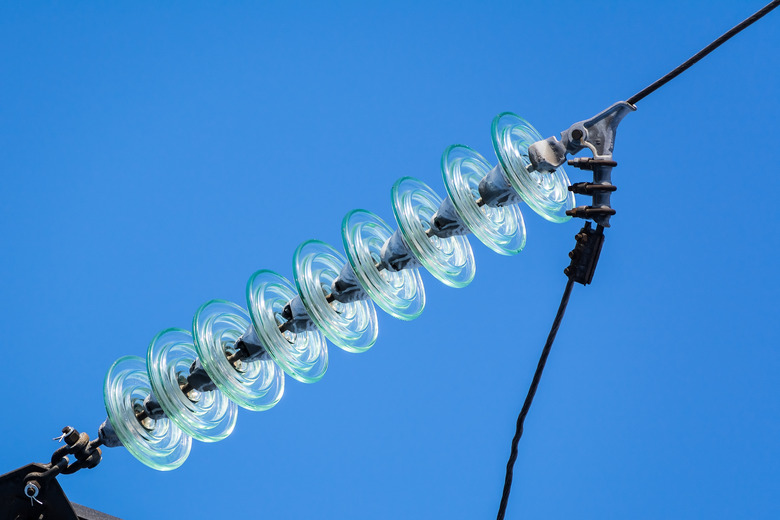The Properties Of Insulators
An insulator is a material which is a poor conductor of electricity or heat. Some common insulators include wood, plastic, glass, porcelain and Styrofoam; Styrofoam and plastic see wide use in household applications. Floors, roofs and basements often get urethane foam insulation, as it reduces heating costs by retaining heat in homes. A number of properties limit an insulator's ability to conduct heat and electricity.
TL;DR (Too Long; Didn't Read)
Insulators are poor conductors of heat and electricity, due to tight binding of electrons in their atoms and molecules. Examples include air, rubber, Teflon, Styrofoam, cloth and fiberglass.
High Resistance
High Resistance
The ability to impede electric current from passing through is known as electrical resistance; this property is measured in units called ohms. When 1 volt produces 1 ampere of current in an object, the resistance is 1 ohm. An ohm is a very small unit of resistance; a conductor might have a resistance of an ohm or two, whereas insulators have ohm measurements in the billions. All materials except superconductors have some resistance; conductors have low resistance, while insulators have high resistance levels.
Breakdown Voltage
Breakdown Voltage
All insulators will conduct heat and electricity if subjected to extremely high voltages. At very high voltages, the material's composition will lose its insulating abilities; the voltage at which this change occurs is known as the breakdown voltage, also known as dielectric strength. As an example, consider air, normally an excellent insulator. Lightning passes through air because its very high voltage overwhelms, or breaks down, air's ability to insulate. Different insulators have different breakdown voltages, and are used for different purposes. For example, plastic may be used as an insulator in households where the voltage is not very high, but it cannot be used for industrial purposes. Ceramic is one of the best insulators in such applications, as it has a very high breakdown voltage.
Atomic Structure of Insulators
Atomic Structure of Insulators
In insulators, the valence (outer) electrons are tightly held together. When the movement of electrons is restricted, no current can flow, making substances with this property — for example, non-metals such as glass, wood and plastic — excellent insulators. This also impedes the flow of heat. The reason most liquids and aqueous solutions are not good electrical insulators is that they contain ions which allow electric current to flow; the same applies to wet plastic and wood.
Air Permeability
Air Permeability
Air permeability, the ability of a material to allow air to flow through its pores, is a necessary property for some heat or thermal insulators. Good insulators have a high air permeability, since air itself is a good insulator. Examples include cloth, such as an oven mitt, and the fiberglass used in home heat insulation.
Cite This Article
MLA
Kinyanjui, Loise. "The Properties Of Insulators" sciencing.com, https://www.sciencing.com/properties-insulators-8173682/. 17 April 2018.
APA
Kinyanjui, Loise. (2018, April 17). The Properties Of Insulators. sciencing.com. Retrieved from https://www.sciencing.com/properties-insulators-8173682/
Chicago
Kinyanjui, Loise. The Properties Of Insulators last modified March 24, 2022. https://www.sciencing.com/properties-insulators-8173682/
